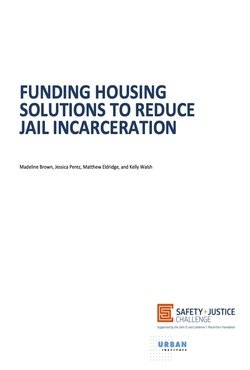By The Crime and Justice Institute
In 2015, the Oklahoma County Detention Center (OCDC) was facing an overcrowding crisis.i This was compounded by a deteriorating facility, high incidences of violence within the jail, several high-profile lawsuits, and an overall lack of public trust in the county’s justice system. The Greater Oklahoma City Chamber of Commerce (Chamber) in collaboration with community leaders created the Oklahoma County Criminal Justice Reform Task Force (Task Force) to assess the county’s criminal justice system and make recommendations to safely reduce the jail population and create a more effective justice system. The assessment, conducted by the Vera Institute of Justice, culminated in six recommendations for the county to responsibly reduce the jail’s population and promote public safety. These included the following, as well as several sub-recommendations within each broader category: Executive Summary In August 2022, the Oklahoma County Criminal Justice Advisory Council (CJAC) requested a follow-up study to identify what recommendations the county has and has not fully implemented as well as what further improvements in the system are necessary to achieve the Task Force’s goals. To conduct this analysis, CJAC sought assistance from the Crime and Justice Institute (CJI), which analyzed data from the OCDC, reviewed state statutes and agency policies, and interviewed numerous system stakeholders. The result of this assessment included seven findings about the county’s criminal justice system identified within this report. Overall, the county has achieved its primary goal of reducing its population to address overcrowding, as the population is down 46 percent since its peak in 2015. Despite this success, the analysis yielded three main challenges that persist in the county’s criminal justice system that will require the county’s attention to resolve. First, while the overall jail population has decreased since 2015, including the total number of individuals detained pretrial, the ratio of sentenced individuals to pretrial individuals has remained steady. Looking at the composition of this population, a measurable number of individuals are being held for low-level offenses or violations such as traffic offenses. Second, Oklahoma has made significant progress in establishing diversion programs 1. Create oversight and accountability mechanisms for the local justice system; 2. Reduce jail admissions for municipal violations and low-level misdemeanors; 3. Create a fair and efficient pretrial release process that safely reduces unnecessary pretrial incarceration; 4. Identify and address district court case processing delays that increase jail admissions and length of stay; 5. Expand meaningful diversion program options, focusing on those with mental illness and substance use disorder; and 6. Reduce the impact of justice system fines and fees as a driver of jail growth and recidivism. by creating partnerships in the community to move individuals to treatment and supervision instead of custodial settings. However, procedural hurdles continue to delay the assessment and placement of individuals in noncustodial settings leading to increased length of stays for individuals in jail longer than 48 hours. And third, a closer examination of the jail data shows that while admissions overall have decreased, the percentage of Black individuals admitted to OCDC has increased. Although the overall population has declined, white admissions have declined at a faster rate than Black admissions (50% v 37%), increasing the overrepresentation of Black individuals admitted to the jail. In sum, Oklahoma County made measurable progress since 2016 in addressing the jail population crisis at the time. This progress was driven by a combination of leaders in county government and the criminal justice system and was supported by community-based stakeholders who contributed greatly to components of the implementation plan. The county’s interest in assessing how effective its efforts have been as well as understanding areas that remain problematic is commendable and the next steps toward expanding the progress made will require similar commitment from leaders and partners throughout the system.
Boston: Crime and Justice Institute, 2023. 37p.








